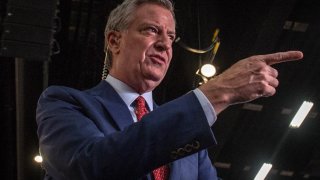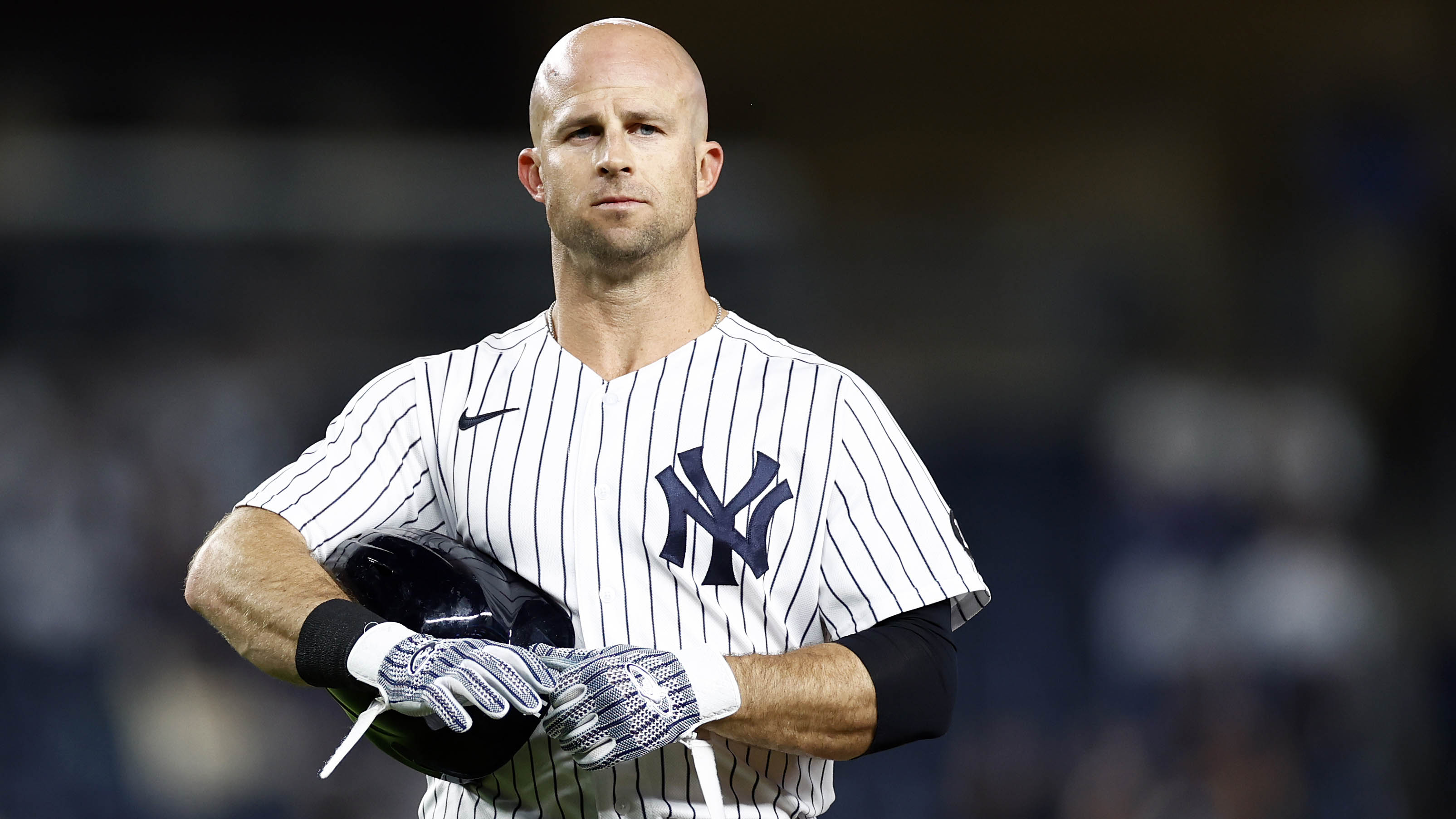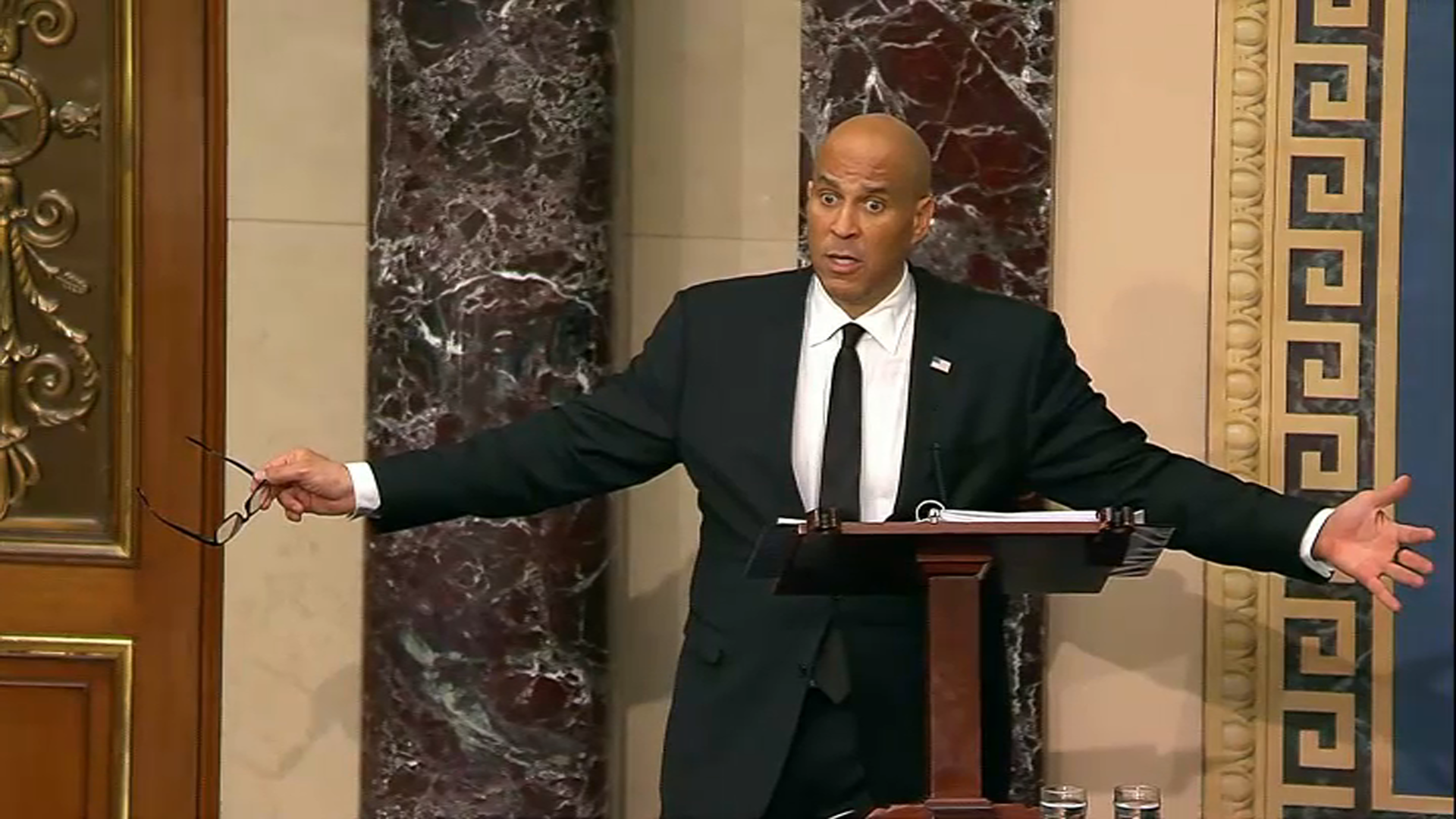
Amid a quick but notable uptick in crime last month, New York City's mayor again called for judges to have the power to determine ‘dangerousness’ when deciding whether or not to release a defendant on bail.
“Judges … need to be given the discretion to understand if someone poses a greater threat, but with real strong checks and balances,” Mayor De Blasio said Tuesday.
Some NYPD officials have pointed to repeat offenders out on bail as one of multiple reasons for a jump in robberies, assaults and grand larcenies across the city.
Under the new bail law, many offenders are being released with no bail as judges are not allowed to consider the level of danger the person presents to the community, only if the suspect will likely show up for court.
The movement to eliminate bail aims to make the system fairer for poorer residents, who are far more likely to get stuck in jail while awaiting trial. That makes them more likely to lose their jobs and to plead guilty, even if they are innocent, experts say. Many borrow bail money from bondsmen and then end up in debt. Wealthier people, meanwhile, can use their more extensive resources to buy their way out of pretrial detention on just about any charge, from shoplifting to murder.
Opponents of the new law have publicized cases of suspects set free ─ bank robbers, repeat burglars, manslaughter suspects, an alleged hit-and-run drunk driver ─ which they say demonstrate how doing away with bail allows dangerous criminals to remain on the streets. Perhaps the most notorious case is that of Tiffany Harris, a Brooklyn woman who was released after she was alleged to have hit three Jewish women in different bias attacks, only to be arrested the next day and accused of an assault on another woman.

News
The mayor said judges should be trusted to make decisions on threat to public safety when making bail so long as “clear and sharp guidelines” are in place to prevent any unfair bias along economic, ethnic or racial lines.
Having a fair bail system with a dangerousness standard “would help us to be safer,” De Blasio said.
Gov. Cuomo has expressed reservations about passing a dangerousness standard but said bail reform continues to be a work in progress. NYPD Commissioner Dermot Shea and the mayor spoke with Assembly Speaker Hastie (D-Bronx) Tuesday morning saying they believed some progress was being made to satisfy all sides in the debate. A spokesman for Heastie did not return a request for comment.
“While the NYPD does what it always does dealing with everything thrown at it there is an important dialogue with our state leaders about the best way to move forward.”
Queens State Senator Michael Giannaris (D-Queens), a key supporter of bail reform, has said the good of the bail reform law outweighs the bad.
"The hysteria around the situation completely ignores the fact that people have been released and accused of horrible things for a long time," said Michael Gianaris, the deputy Democratic leader of the state Senate, who sponsored the bail reform law. Under the traditional bail system, the people who got released "had the money to buy their freedom," he said.

"For every story that gets sensationalized, there are hundreds of people who have been able to keep their jobs and remain with their families while accused of low-level crimes," he said.
In comparing January 2020 to the same time last year, robberies in NYC are up 36 percent, burglary up 20 percent and car thefts up 72 percent with overall crime up 16 percent. Shea said bail reform may be partly to blame, but did not provide a specific breakdown for how much of the increase might be linked to more criminal suspects making bail.
“What if someone is not a flight risk, but for very specific and objective reasons could be a threat to the surrounding community. There is a way I think … to address that real world condition and I think it can be done equitably,” De Blasio said. “I think we can walk and chew gum at the same time.”



